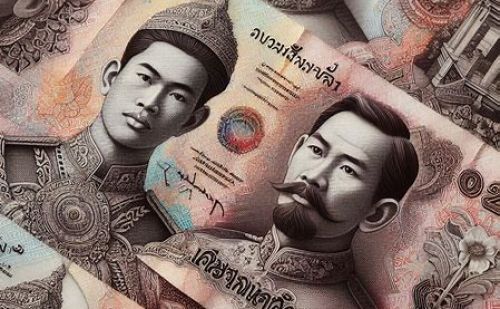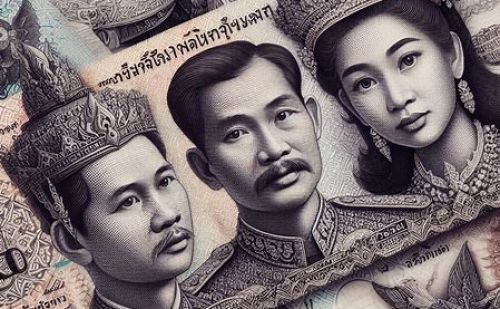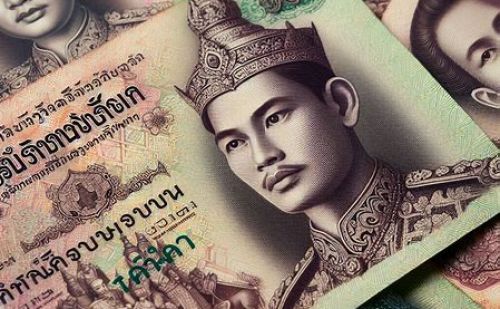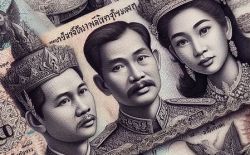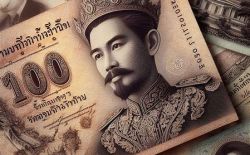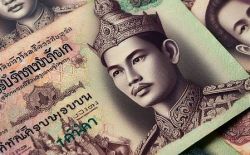Thai money
Thai money
Thai money is called baht (฿) and it is the official currency of Thailand. One baht can be divided into 100 satang (สตางค์). As of today, one US dollar is equal to 34.55 baht. You can use the Xe Currency Converter or the Xe Currency App to check the latest exchange rates and send money online.
What is the history of Thai money?
The history of Thai money is very interesting and spans over many centuries. Here are some key points:
The original Thai currency was called the tical, which was a unit of silver weight
The tical was used in various forms of bullet coins, which were pieces of solid silver cast to different weights and shapes
The tical was also equivalent to the baht, which is the Thai name for the currency since the 19th century
The baht was divided into smaller units such as the salueng, the fueang, and the satang
In 1897, King Chulalongkorn introduced the decimal system, in which one baht = 100 satang
In 1904, he also demonetized the silver bullet coins and replaced them with modern coins and banknotes
The baht is still the official currency of Thailand today, and it is issued by the Bank of Thailand
How do I identify counterfeit money in Thailand?
Counterfeit money is a serious problem in Thailand, and it can be hard to tell the difference between real and fake banknotes. Here are some tips to help you identify counterfeit money in Thailand:
Check the watermark of the king’s image on the right side of the banknote. It should be clear and visible when you hold the note up to the light
Check the dashed line that runs from top to bottom on the left side of the banknote. It should show the words “1000 บาท” in both Thai and English when you hold the note up to the light
Check the metallic strip on the left side of the banknote. It should be a rich golden yellow color and close to the edge of the note
Check the flowers that circle the number “1000” on the right side of the banknote. They should glisten in the light and have sharp and crisp lines
If you find any counterfeit money, you should report it to the nearest police station as soon as possible. Using or producing counterfeit money is a crime in Thailand and can result in fines or imprisonment be careful and vigilant when handling money in Thailand.
How do I exchange currency safely in Thailand?
Exchanging currency safely in Thailand is important to avoid losing money or getting into trouble. Here are some tips to help you:
Bring some cash in your own currency or US dollars, as they offer better exchange rates than ATMs or credit cards. However, do not carry too much cash for safety reasons and declare it at customs if it exceeds 20,000 baht
Use reputable currency exchange services such as Superrich, SIA Money Exchange, or Vasu Exchange, which offer the best rates and have branches in Bangkok and other major cities. You can check their daily rates online at daytodaydata.net.
Avoid exchanging money at the airport, hotels, or tourist areas, as they usually have lower rates and higher fees. Also, avoid street vendors or unofficial agents who may scam you or give you counterfeit money
Check the watermark, the dashed line, the metallic strip, and the flowers on the banknotes to identify counterfeit money. If you find any, report it to the police and do not use it or produce it
Keep your receipt and exchange slip when you exchange money, as they may be required by the authorities or for tax purposes. Also, keep some small change for tipping or buying from local vendors
What are some Thai banknotes?
Some Thai banknotes are:
20 baht: This banknote is green and features the portrait of King Rama X on the front and the images of King Rama II and King Rama VIII on the back
50 baht: This banknote is blue and features the portrait of King Rama X on the front and the images of King Mongkut and King Chulalongkorn on the back
100 baht: This banknote is red and features the portrait of King Rama X on the front and the images of King Vajiravudh and King Bhumibol Adulyadej on the back
500 baht: This banknote is purple and features the portrait of King Rama X on the front and the images of King Nangklao and King Ananda Mahidol on the back
1000 baht: This banknote is brown and features the portrait of King Rama X on the front and the images of King Buddha Yodfa Chulaloke and King Bhumibol Adulyadej on the back

